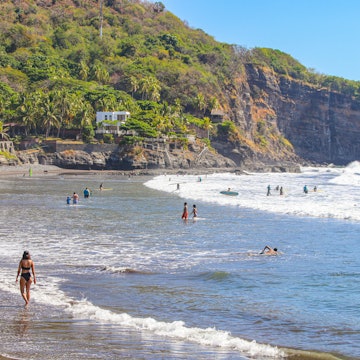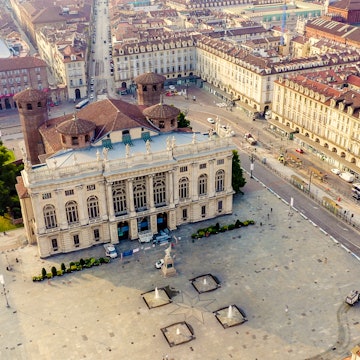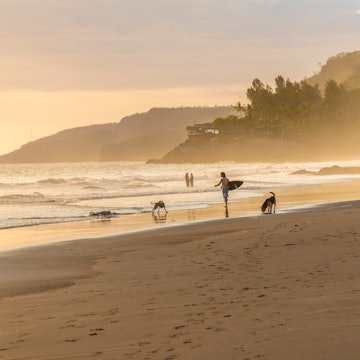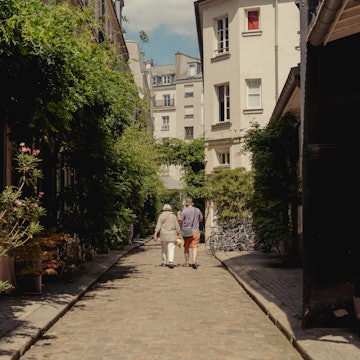
The 15 best places to visit in Southern Italy


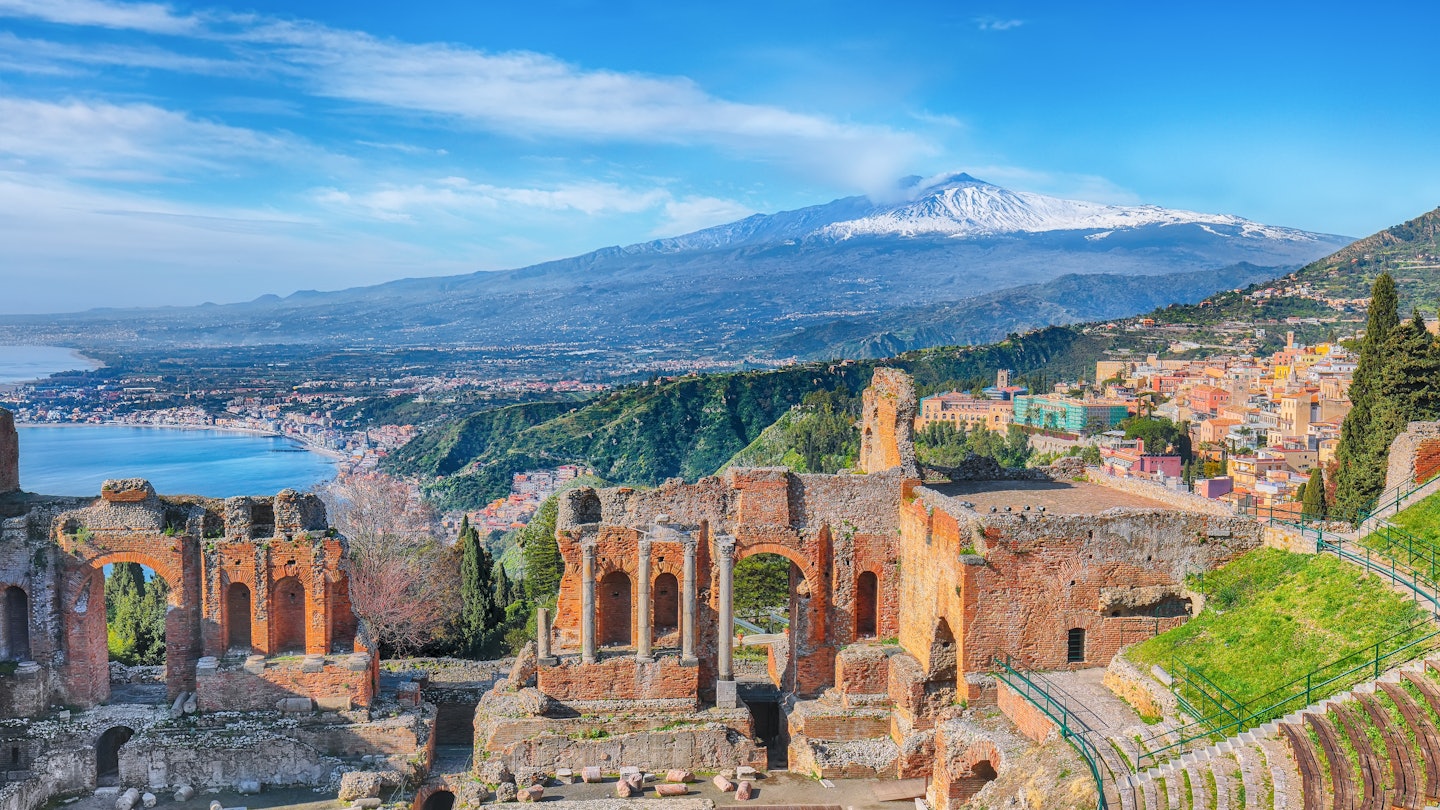
Mt Etna rises behind the Greek amphitheater in Taormina, Sicily. Vadym Lavra/Shutterstock
The monument-crammed cities of northern Italy may grab the headlines, but a gentler vision of Italian life endures in the Mezzogiorno, the local name for the regions of Campania, Puglia, Basilicata, Calabria and Sicily.
At the heel of the Italian boot, life moves to the ebb and flow of the seasons, with the produce from local farms and vineyards joining foraged foodstuffs on seasonal menus all over Southern Italy. But there are big-hitter sights here too – magnificent Naples, with its rich history and vibrant food culture; volcano-ravaged Pompeii and Herculaneum; architectural wonders in Lecce and Matera; timeless ruins and blinding beaches in sun-smooched Sicily.
There’s plenty of ground to cover, so it pays to plan your itinerary carefully and map out your must-visit spots. Wherever you go, consider the weather – in summer, the Mezzogiorno bakes and everyone relocates to the beaches, so the milder spring and fall seasons are better times for hiking and exploring historic towns and villages.
To help you pick which pins to stick in your map, here are the best places to visit in Southern Italy.

1. Naples
Best for big-city energy
Italians sometimes joke that there’s Italy and then there’s Naples – so singular is its character, and so potent its historical legacy. This is a metropolis of vibrant markets, treasure-stuffed museums and buzzing pizzerias in the backstreets, but also a city marked by historical neglect and the long reach of the Camorra, the local Mafia.
Almost everyone goes out for pizza – invented here in the 16th century – but don’t overlook other culinary delights such as the local seafood, fried pasta and mozzarella di bufala. Then there are the city’s museums, covering everything from art to archaeology, and sacred sites linked to San Gennaro, including the handsome Duomo di Napoli and the city’s ancient catacombs. Give yourself several days to soak it all in.
Planning tip: It’s a brave traveler who brings a car to Naples; the traffic can be desperate and parking elusive. Explore on foot, or via the bus, metro or funiculars.
2. Capri
Best for mixing with the glitterati
The island of Capri in the Bay of Naples has been a retreat for the wealthy and powerful for centuries, luring everyone from the Roman emperor Tiberius to Jennifer Lopez. Most start in glamorous Capri Town, awash with chic boutiques and cool cafes, but walking routes lead through idyllic woodland to ancient Roman villas and the serene Giardini di Augusto and Certosa di San Giacomo gardens.
Be sure to explore the island’s rocky coastline, where rock-cut platforms double as diving boards, and beautiful people gather at chic pebble beaches such as Bagni di Tiberio, set next to one of the emperor’s ruined villas. Don’t miss the Grotta Azzurra (Blue Grotto), a sea cave that’s been an object of fascination and worship since Roman times.
Planning tip: Find more island magic on a boat trip to the island of Ischia, the biggest of the Bay of Naples islands. The island’s thermal springs were discovered by the ancient Greeks, and hot-spring resorts such as Giardini Poseidon still draw a crowd.

3. Pompeii and Herculaneum
Best for captivating history
The once-thriving Roman city of Pompeii had its party cut short in 79 CE, when tons of lapilli (burning fragments of pumice stone) rained down on the city from nearby Mt Vesuvius. As well as encasing citizens in ash, this shroud of volcanic debris preserved whole Roman streets and two-millennia-old houses, temples, shops, cafes, amphitheaters and even a brothel.
Combine a trip to Pompeii with a visit to nearby Herculaneum, another unlucky Roman township destroyed by the eruption. Here, devastation came in the form of mud flows that drowned and then perfectly preserved whole villas. Visit the Casa dei Cervi, with its statues of an intoxicated Hercules and deer being attacked by dogs, and the warehouses of L’Antica Spiaggia, which became a refuge then a tomb for some 300 people.
Planning tip: Rather than fighting the traffic, reach Pompeii and Herculaneum on the Circumvesuviana train, which links Naples and Sorrento.
4. Costa degli Dei
Best for sparkling beaches
Calabria’s 800km-long Tyrrhenian coast is lined with beautiful beaches, accessible via the Autostrada del Mediterraneo (A2), one of Italy’s great coastal drives, which twists and turns through tunnels blasted through the mountains. Pilgrims flock to the birthplace of St Francis, Calabria’s patron saint, but the jewel in the Tyrrhenian crown is undoubtedly the 34.2km-long Costa degli Dei (Coast of the Gods).
This bulbous peninsula is cloaked in Mediterranean forests that plunge down to gorgeous beaches lapped by crystalline waters. The focal point of the coast is Tropea, a buzzing tourist town that throngs with Italian sun worshippers in summer, but more fine sands await at Parghelia, Nicotera, Ricadi and Paradiso del Sub. Mix up beach time with scuba diving and excursions to dramatic natural caves along the coast.
Detour: If you’re looking for beach time with a party vibe, head to Gallipoli on the coast of Puglia. All around this historic old town, sandy beaches throng with sunbathers by day and party people by night, with big crowds dancing till dawn at clubs such as Praja Gallipoli, Riobo and Parco Gondar.

5. The Amalfi Coast
Best for pastel-colored towns and dramatic sea views
Tracing the rocky shore between Sorrento to Salerno, the Amalfi Coast is one of the most famous stretches of coastline in the world, and its 22 pastel-hued towns are some of the most picturesque spots in all of Italy. Unfortunately, in summer, the SS163 hwy – aka the Nastro Azzurro (Blue Ribbon) – turns into a congested chain of traffic.
Come out of season to get the best from breathtakingly pretty towns such as Positano, Sorrento, Salerno, Amalfi and Ravello, with its sweeping cliff-top gardens. Rather than rushing from place to place, block out time for a class in cheese-making in Vico Equense, a pottery lesson in Vietri sul Mare, or a hike to the lofty plateau of Santa Maria dei Monti.
Planning tip: To beat the traffic congestion, travel on the SITA bus, which connects the towns along the Sorrento Peninsula.
6. The Gargano
Best for a peaceful escape
While the coast of the rugged Gargano peninsula in Puglia features some popular beaches, it’s the Parco Nazionale del Gargano that draws fans of silence and tranquility. Hikers tramp through ancient stands of beeches and holm oaks and scramble along rocky gorges, while pilgrims visit the sacred grotto where St Michael the Archangel miraculously appeared.
Launch outdoor adventures from laid-back Vieste, set atop steep white cliffs nestled between sandy beaches. Here, you can wander through narrow alleys draped with lines of drying clothes and enjoy soul-lifting sea views, before dropping down to Spiaggia di Castello or Spiaggia di San Lorenzo to windsurf or kitesurf (best between May and September).
Planning tip: To reach the Gargano by public transport, first take the train to Foggia, then travel by local bus around the peninsula.

7. Matera
Best for a sense of living history
The città sotterranea (underground city) of Matera in Basilicata was hollowed out over millennia as residents carved out cave dwellings at the rim of a rocky gorge. With its historic architecture and time-polished churches, this is one of the most evocative places to visit in all of Italy, yet Matera was once the “shame of Italy” – a place so blighted by poverty and neglect that it created national outcry.
Since then, a flood of investment from the EU and Italian government has revived the historic center, filling the cave houses with cafes, restaurants, shops, gelaterias and atmospheric guesthouses and hotels. It’s a place to linger, clambering down into the gorge, and exploring historic churches like the mural-filled, rock-cut Cripta del Peccato Originale.
Planning tip: To get the best from Matera, stay in a rock-hewn hotel; atmospheric Sextantio and stylish Casa Diva take cave dwelling into boutique territory.
8. Lecce
Best for baroque grandeur
Tuscany may have the Renaissance wonders of Florence, Pisa and Siena but Puglia has its own baroque marvel – elegant Lecce, whose extravagantly ornamented churches and palazzi (mansions) mark the high point of Southern Italian architecture. Walking the narrow streets of the stone-lined historic center will whisk you back through time.
Duck into 17th-century marvels such as the Basilica di Santa Croce, with its filigree detailing and ornate rose window, and the mansion-crowded Piazza del Duomo, home to the Cattedrale di Lecce, with its soaring bell tower. Be sure to stop into a local cafe for a coffee and pasticciotto – a warm, pastry shell filled with creamy custard and fruit.
Planning tip: To enter Lecce’s historic churches, buy a sightseeing ticket from the LeccEcclesiae website.

9. Alberobello
Best for fairy-tale vibes
Emerging from a landscape of rolling green fields and vineyards in the Valle d’Itria, the town of Alberobello feels like a fairy tale made real. Traditional stone-tiled conical homes sprout along its streets like cottages for gnomes, or a Smurf village blown up to human size. Home to some 2000 traditional trulli homes, the town is a firm stop on the tourist map, but if you stay overnight, you'll find the crowds dissipate. You’ll half expect Gargamel and his cat to pop up any moment.
Planning tip: Rione Monti is the largest and most famous trulli neighborhood, but don’t overlook the northern part of town, where the Trullo Sovrano contains the town museum.
10. Parco Nazionale del Pollino
Best for escaping (from everything)
Spanning southern Basilicata and northern Calabria, the Parco Nazionale del Pollino is the largest national park in Italy, protecting 1926 sq km of steep mountains and plunging valleys. The “Mountains of Apollo” are a playground for hikers and anyone seeking an escape from the digital age, preserving rare flora and fauna, including a gigantic 1300-year-old tree said to be the oldest in Europe.
Walking trails weave through forests of oak, maple, beech, pine and fir, and climbers and mountain bikers gather for adrenaline-spiking ascents and descents. Local agency Pollino Adventure can organize all sorts of adventures. Stay in small-town hubs such as Viggianello, Latronico, Terranova di Pollino and Rotonda, and you can mix untamed nature with cultural experiences such as the Celtic-origin Marriage of the Trees in Accettura.
Planning tip: Another great thrill in the Pollino is trekking, tubing and rafting along the Mercure River, which flows west past Viggianello, where outdoor center Infopollino arranges adventurous trips year-round.
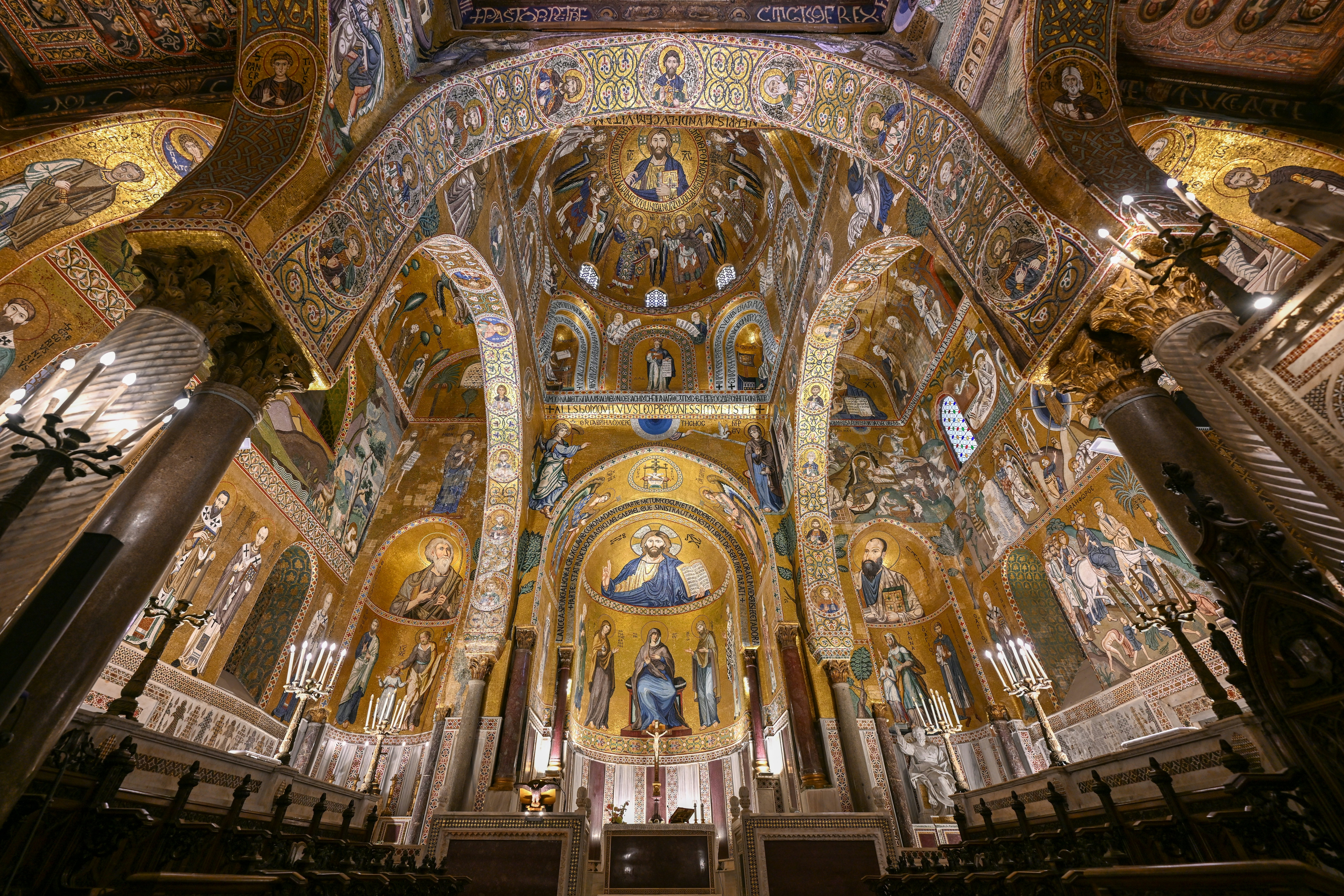
11. Palermo
Best for layered history
Nearly 3000 years old, the Sicilian city of Palermo has hosted ancient Greeks and Romans, Arab conquerors, Norman invaders and home-grown island dynasties, in the process becoming a melting pot of all these influences. The island’s capital is highly cosmopolitan and deeply Sicilian, as you’ll discover at its animated markets, cherub-encrusted churches and anti-Mafia monuments.
Start exploring at the lively Mercato di Ballarò and roam the surrounding lanes, snacking at roving street carts and cooling down with servings of grattatella (ice shavings soaked in fruit syrup). Then get a Sicilian history lesson at the Byzantine mosaic-filled Palazzo dei Normanni (Palazzo Reale) fortress and the No Mafia Memorial, which strips away the Hollywood glamour from the organized crime families known as the Cosa Nostra.
Planning tip: Get around Palermo using the city’s charming autorickshaw-like Ape taxis, or rent a bike (or arrange a tour) through Social Bike in the center.
12. Syracuse
Best for Greco-Roman history
A showstopping ancient Roman amphitheater is just the warm-up for a star-studded show of treasures in Syracuse. Ancient Greek ruins rise out of lush citrus orchards, cafe tables fill baroque piazzas, and honey-hued medieval side streets tango to the sea. In its heyday, this was the largest city in the ancient world, bigger than Athens and Corinth.
Today, visitors gather to clamber over the amphitheater and explore the ancient Greco-Roman ruins of the Parco Archeologico della Neapolis. Wander the city’s elegant baroque piazzas, grab lunch in the lively Antico Mercato, and stroll around the historic labyrinth of lanes in the sea-circled island neighborhood of Ortygia.
Detour: Follow the coast north to Taormina and Catania – two of Sicily’s most historic and atmospheric cities. Both have handsome churches, streets lined with volcanic stone buildings and dramatic amphitheaters that once hosted rapt audiences of Romans and ancient Greeks.
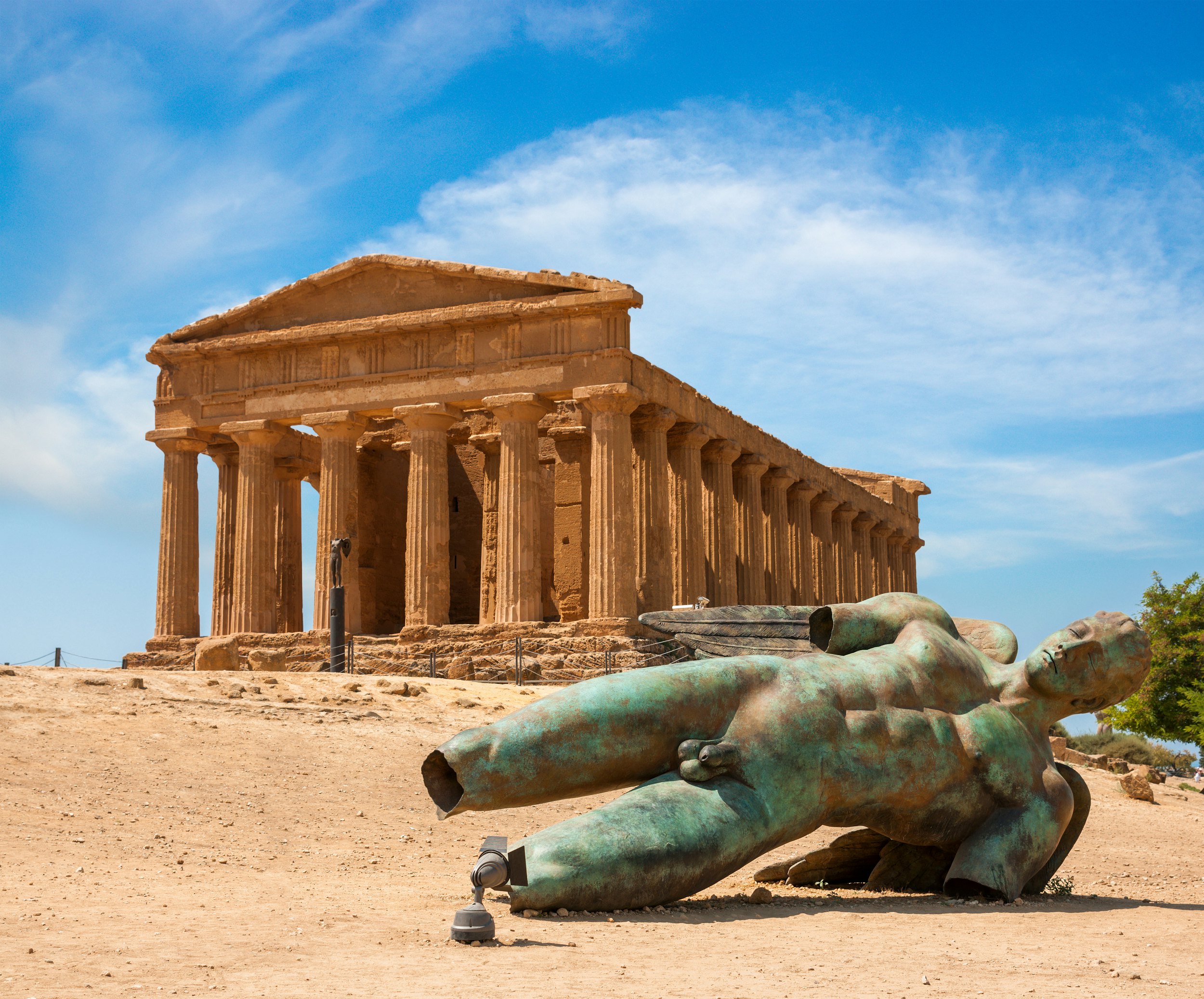
13. Valley of the Temples
Best for reconstructed ancient wonders
The ancient Greek temples of the Valley of the Temples at Agrigento in Sicily didn’t always look quite so grand, but 19th-century archaeologists returned the towering stone columns and mighty lintels to their original positions, reviving one of the most remarkable collections of religious buildings in the classical world.
It was the Carthaginians who ransacked the ancient city of Akragas in 406 BCE. You can almost imagine the bay filled with bristling galleys as you look out from structures such as the Tempio della Concordia – one of a string of ancient Greek temples from the 5th century BCE.
Planning tip: Don’t limit your time in Sicily to the historic sights. The island is blessed with some of Italy’s best beaches, from the family-friendly sands at buttress-bookmarked San Vito Lo Capo near Trapani to the scenic strands at Lido Scala dei Turchi near Agrigento.
14. Mt Etna
Best for volcanic pyrotechnics
Soaring above the east coast of Sicily, Mt Etna is a 3357m monster that regularly sends lava dribbling downhill toward Catania, most recently in June 2025. At the same time, Etna is a popular destination for hiking, sightseeing and even skiing (under the watchful eye of local volcanologists).
It is forbidden to trek above 2500m without a professional guide, but organized hikes are easy to arrange in Catania or Taormina. The most popular way to visit independently is to travel by bus or taxi to the Piazzale Rifugio Sapienza refuge, where you can follow footpaths around minor craters. From here, the Funivia dell’Etna cable car can whisk you up to Montagnola at 2500m, the starting point for guided hikes and 4WD tours.
Detour: The other big volcano in the Mezzogiorno is Mt Vesuvius, whose craggy summit can be seen from all along the Campania coast. You can climb up to its 450m-wide crater on foot or on horseback, or take the easy route and ride the shuttle from Herculaneum train station.

15. Aeolian Islands
Best for an island escape
Listed by UNESCO for their dramatic volcanic rock formations, the Aeolian Islands off the north coast of Sicily feel like a well-kept secret, at least outside Italy. From lively Lipari, with its cliff-top castello and 17th-century cathedral, to fuming Vulcano and Stromboli, these seven dotted islands offer escape and adventure in equal measure.
Lipari is the largest island, and the most popular port of arrival, but island-hopping ferries can deliver you to Vulcano, where you can hike up the smoking Fossa di Vulcano volcano and bathe in hot springs, and scenic Stromboli, where there’s a good chance of seeing fountaining lava. Don’t overlook road-free Alicudi and family-friendly Salina, famed for its freshwater springs and fruit-flavored granita.
Planning tip: Get to the Aeolian Islands by hydrofoil from the Sicilian ports of Milazzo or Messina, or seasonal boats from Naples or Palermo; smaller ferries link the other islands, so it’s easy to hop between them.
This article was adapted from Lonely Planet’s Southern Italy guidebook, published in May 2025.








